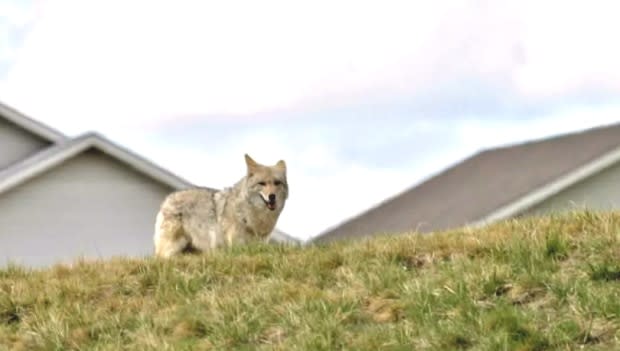Are coyotes getting bigger? UNB researchers on quest to find out
Two researchers at the University of New Brunswick are collecting coyote carcasses this winter to find out if the canines are getting bigger.
Graham Forbes, biodiversity and wildlife professor at the University of New Brunswick, is working with graduate student Max Zhong to compare the size of modern coyote carcasses to ones that died 40 years ago.
The pair became interested in studying the topic after hearing trappers and other researchers comment on the size of coyotes in the province.
"We thought we'd get some data to try to get a handle on that," Forbes said.
Forbes and Zhong receive the coyote carcasses from people who are trapping the animals for pelts.
They've collected around 100 carcasses so far from across the province, but are looking to pick up about 50 more.
"We're doing sort of north to south, east to west just to get good coverage for the spatial extent of the province," Forbes said.
The researchers have already begun splitting the carcasses into four categories: adult males, adult females, male pups and females pups. They can tell the age of the animal based on the size of its teeth.
Forbes and Zhong have also started measuring the weight, length of the body, tail, hind foot, distance from the shoulder blade to the foot and size of the paw. They'll be comparing those measurements to ones recorded by Gary Moore in the 1980s.

Forbes said the size of coyotes may be increasing because the coyotes have an ecological advantage on other species by being bigger.
The canines in New Brunswick are actually a hybrid of the smaller western coyote from the prairies and wolves from the Great Lake Region. The species moved eastward and was first recorded in New Brunswick in the 1950s.
"This group of wolf-like animals are quite complicated genetically and so there's a lot of variety in their genes," Forbes said, adding that variety makes it possible for some New Brunswick coyotes to end up larger.
The scientists expect the project will be completed this spring.

